|
December 2020 - March 2021 |
| |
|
|
 |
|
 |
| |
Publisher: Chairman Jian-Jang Huang Editors: Professor
Snow H. Tseng, Ms. Hsiao-wen Lin May 30, 2021 |
| |
|
 |
|
Congratulations to Prof. Sheng-Lung Huang and Prof. Chi-Kuang Sun for being awarded the “The 17th National Innovation Award.”
|
Award
|
Recipient(s) |
|
The 17th National Innovation Award
Topic : High Resolution In Vivo OCT System |
Apollo Medical Optics (Research Partner)
Prof. Sheng-Lung Huang Research Team
|
|
The 17th National Innovation Award
Topic : Noninvasive 3D Dermatopathological Imaging Technology |
Prof. Chi-Kuang Sun Research Team |
Congratulations to Prof. Gong-Ru Lin for being awarded the “Taiwan Photonics Society Optoelectronics Engineering Award 2020.”
Congratulations to the following students for being awarded the “OPTIC 2020 Student Paper Award.”
| |
Student |
Advisor |
Research Topic |
|
Oral |
Chuan-Bor Chueh
(doctoral student)
|
Prof. Hsiang-Chieh Lee |
Multi-Scale Wide Field-of-View Optical Coherence Microscopy with 1.7-µm Swept Source Laser |
|
Oral |
Ya-Ting Liang
(master student) |
Prof.
Chao-Hsin Wu
|
Monolithically Integrated Opto-Electronic SR Latch Using Light Emitting Transistor |
|
Poster |
Shi-Kang Tseng
(doctoral student)
|
Prof.
Yih-Peng Chiou
|
A Wide-angle Wideband Polarization-intensitive Metamaterial Absorber Based on UPML Mechanism |
|
Poster |
Dai-Jie Lin
(doctoral student)
|
Prof.
Jian-Jang Huang
|
Reduce current collapse in AlGaN/GaN HEMTs with dual-gate structure |
|
Poster |
Yu-Hsin Kuo
(master student)
|
Prof.
I-Chun Cheng
|
a-IGZO TFT with Wireless Gate Structure |
|
Poster |
Chia-Pei Liao
(master student)
|
Prof.
Sheng-Lung Huang
|
Corneal sub-basal nerve reconstruction and quantification with cellular-resolution optical coherence tomography |
|
|
 |
|
 |
|
| |
|
 |
|
September “GIPO Colloquium” Highlights |
|
|
2:20 pm,
September
18 (Fri.), 2020 |
|
Speaker: |
Allen Lin (Associate Chairman, Foxconn) |
|
Topic: |
Cross-Disciplinary Innovation - From Fresh Upstarts to Technology Giants |
| |
|
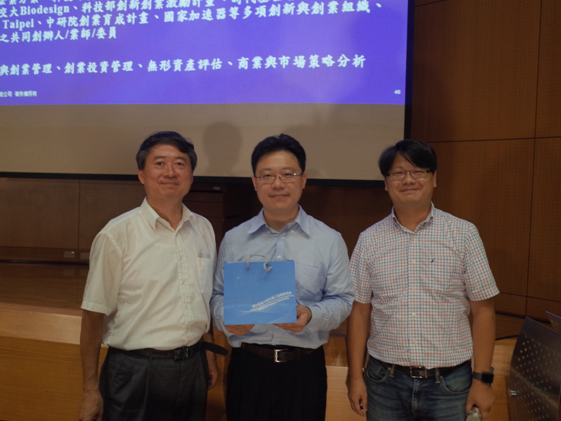 |
|
From left to right, Prof. Sheng-Lung Huang, Associate Chairman Allen Lin, and Prof. Hsiang-Chieh Lee. |
|
|
October “GIPO Colloquium” Highlights |
|
|
2:20 pm, October
23 (Fri.), 2020 |
|
Speaker: |
Prof. Bing J. Sheu (Chair Professor, Dept. of Electronics Engineering, Chang Gung University) |
|
Topic: |
Utilization of Person Talents and Resources - The Era of Artificial Intelligence |
|
|
|
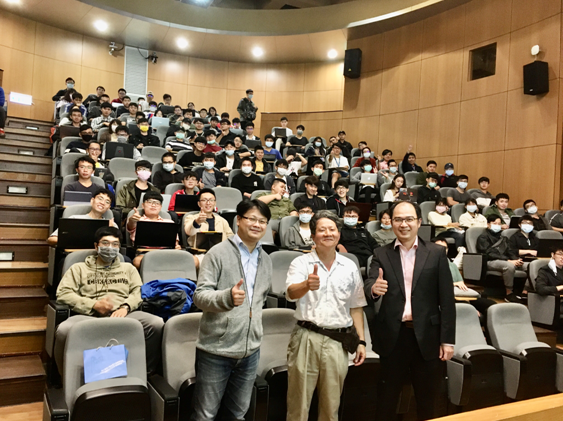 |
|
From left to right, Prof. Hsiang-Chieh Lee, Prof. Bing J. Sheu, and Prof. Jian-Jang Huang. |
|
|
|
2:20 pm, October 30 (Fri.), 2020 |
|
Speaker: |
Prof. Tien-Tsorng Shih
(Dean, College of Electrical Engineering and Computer Science,
National Kaohsiung University of Science and Technology) |
|
Topic: |
High Speed Fiber Network - Silicon Photonics |
|
|
|
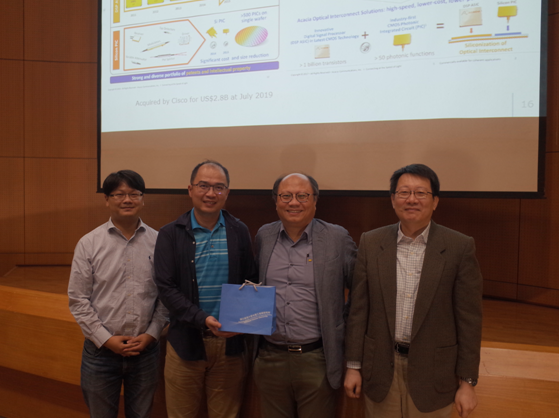 |
|
From left to right, Prof. Hsiang-Chieh Lee, Prof. Jian-Jang Huang, Prof. Tien-Tsorng Shih, and Prof. Gong-Ru Lin. |
|
|
November “GIPO Colloquium” Highlights |
|
|
2:20
pm, November 27 (Fri.), 2020 |
|
Speaker: |
Ching-Hsiang Tsai (Senior
Vice Manager, WI Harper Group) |
|
Topic: |
Entrepreneur and Venture Capital |
|
|
|
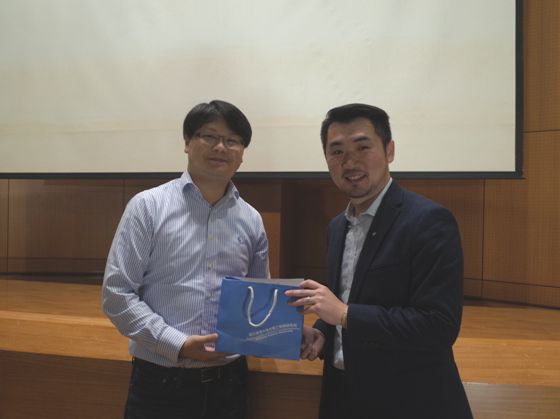 |
|
From left to right, Prof. Hsiang-Chieh Lee and Senior Vice Manager Ching-Hsiang Tsai. |
|
|
December “GIPO Colloquium” Highlights |
|
|
2:20
pm, December 4 (Fri.), 2020 |
|
Speaker: |
Yi-Jan Chen (Chairman, Southport Co. Ltd.) |
|
Topic: |
The Importance of Cross-Disciplinary Integrations - From Technology to Innovation |
|
|
|
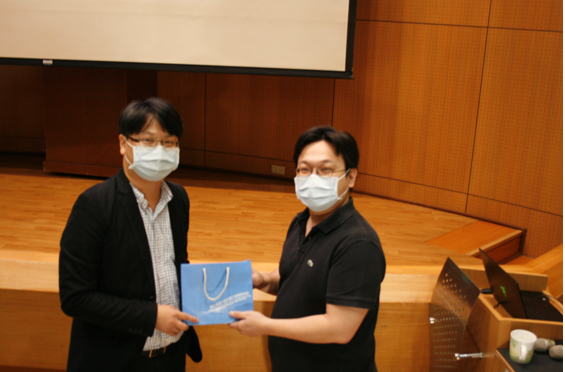 |
|
From left to right, Prof. Hsiang-Chieh Lee and Chairman Yi-Jan Chen. |
|
|
|
2:20
pm, December 11 (Fri.), 2020 |
|
Speaker: |
Chuck Huang (Associate
Vice President, WIN Semiconductors Corp.)
Hsi-Wei Wang (Vice
Section Head, Tech Section, WIN Semiconductors Corp.) |
|
Topic: |
Compound Semiconductor: Applications and Trends |
|
|
|
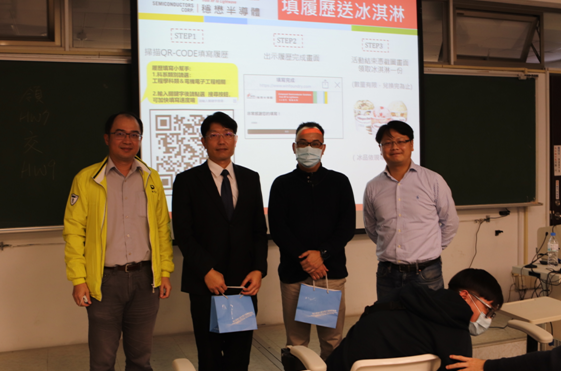 |
|
Associate Vice President Chuck Huang, Vice Section Head Hsi-Wei Wang, Prof. Jian-Jang Huang, and Prof. Hsiang-Chieh Lee. |
|
|
|
3:30
pm, December 18 (Fri.), 2020 |
|
Speaker: |
Chun-Hsiang Yan (Manager, Applied Materials) |
|
Topic: |
Career and Life |
| |
|
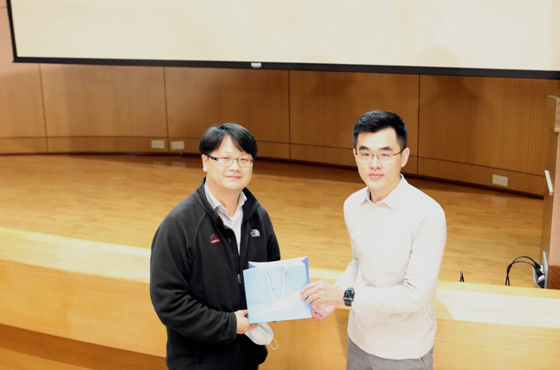 |
|
From left to right, Prof. Hsiang-Chieh Lee and Manager Chun-Hsiang Yan. |
|
|
|
2:20
pm, December 25 (Fri.), 2020 |
|
Speaker: |
Chia-Hsin Liang (Section
Head, Vision Section, Gallant Precision Machining) |
|
Topic: |
Automatic Optical Inspection and Artificial Intelligence |
| |
|
 |
|
From left to right, Prof. Hsiang-Chieh Lee and Section Head Chia-Hsin Liang. |
|
|
January “GIPO Colloquium” Highlights |
|
|
2:20
pm, January 15 (Fri.), 2021 |
|
Speaker: |
Patrick Tang (Manager, ASML Global Support Center DUV Asia)
Billy Chen (Group Leader, ASML Global Support Center DUV Asia)
Sampo Weng (Engineer Illumination & Projection, ASML Global Support Center DUV Asia)
Will Chang (Engineer
Metrology & Sensors, ASML Global Support Center DUV Asia) |
|
Topic: |
Be Part of Progress Making Chips More Powerful, Smaller and Cheaper |
|
|
|
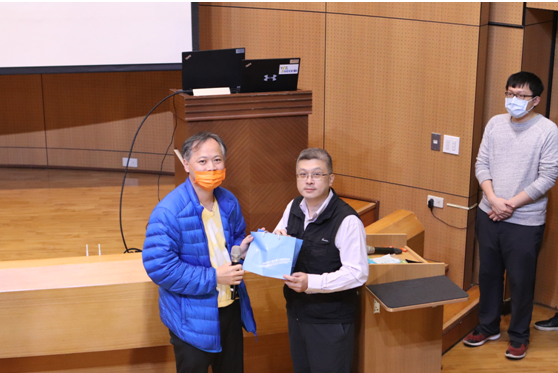 |
|
The invited speaker and Prof. Yuh-Renn Wu
(left). |
|
|
|
~ GIPO End-of-Semester Party 2020
~
(December
18, 2020, 3F courtyard of Ming-Da Hall, National Taiwan University)
by
Chang-Yuan Chung
On 18th December, the day before the winter solstice, the GIPO
End-of-Semester Party was held. First of all, a big "Thank You!" goes to my fellow members of the student
association, for volunteering their valuable time to attend the student
association
meetings, and to the administrative staff too, for helping us over the course of these two months in planning and preparing for this wonderful event today.
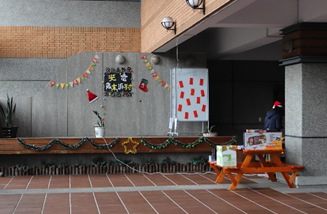 |
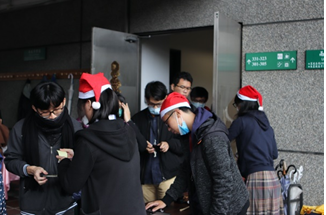 |
|
Our arts team decorating the venue. |
Arriving at the venue. |
Behind the success of this event, and behind all the smiles and laughter today, is the silent contributions of our arts team. From the posters to the props to the decors, more than a banquet of delicious cuisine, our arts team also gave us a feast for our eyes, full of early Christmas delight.
 |
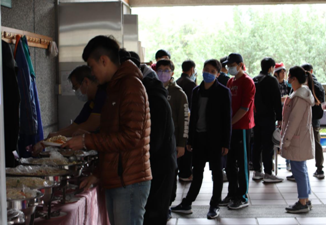 |
|
Fellow students coming to participate. |
Lining up for a meal. |
The menu for this event was a careful selection by our
association members, with the addition of salad and an assortment of delicious desserts and pizza. We hope that, from the beginning to the end, everyone will be able to enjoy themselves throughout the program of this event.
 |
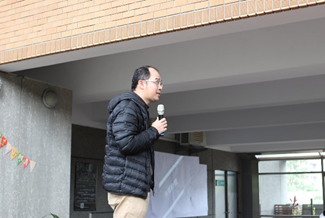 |
|
Delicious desserts. |
A few words from our chairman. |
For the climax of this event, we were lucky enough to be able to invite Prof. Jian-Jang Huang, our Institute Chairman and one of the most important members of GIPO, to give us a few words of encouragement. The chairman more than complied, but also gave us an inspiring song "Norweigian Woods" and an energetic Coincidance that instantly hyped up the floor.
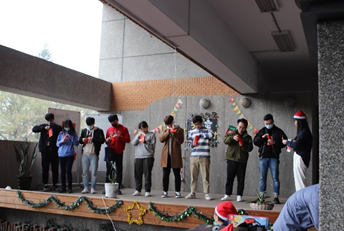 |
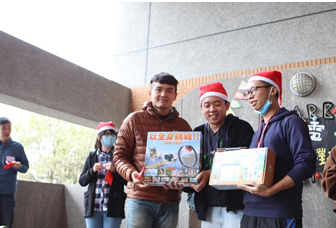 |
|
Lucky winners! |
First prize winner, walking away with a Nintendo Switch. |
The prize for our lucky draw this time includes Nintendo Switch, Apple Bluetooth Headsets, and vouchers from many major restaurants. I hope that all our lucky winners today all walked away with a happy smile, and I also hope that all of us who hadn't been quite as lucky will also be happy with our little gifts too.
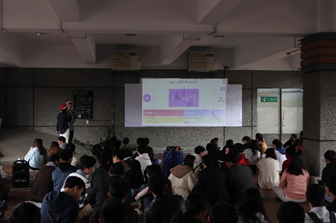 |
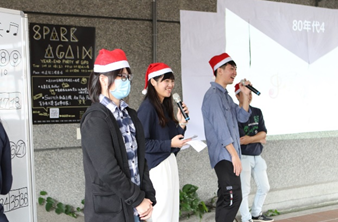 |
|
The heated OptoElec Trivia battle. |
Hosting a song game. |
Through the games and activities, we hope that more people can get to know each other better, and that this event will be able to bring a touch of warmth during the midst of the cold winter days. And, last of all, a big thank you to all of you. It is always a joy to see a smile on all of your faces.
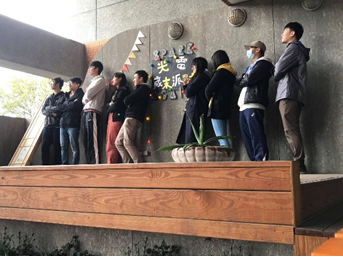 |
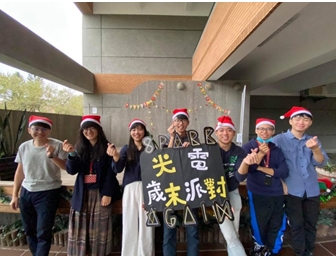 |
|
The preparation team. |
Members of the GIPO Student
Association. |
|
 |
|
 |
|
| |
|
 |
Development of High-Index Transparent Electrodes for Optoelectronic Applications
Professor Chung-Chih Wu
Graduate
Institute of Photonics and
Optoelectronics, National Taiwan
University
Light out-coupling has been a long-lasting issue for organic light-emitting devices (OLEDs). Aside from light extraction schemes relying on generally complicated optical structures, the most convenient and desirable approach, however, is to directly enhance light extraction through modulating optical properties of active layers in conventional planar OLEDs. We study the adoption of a high refractive index transparent electrode as a new avenue for greatly boosting OLED light extraction efficiency. By using the Nb-doped TiO2 transparent electrodes with a high refractive index of 2.4, along with state-of-the-art low-index organic carrier transporters and highly horizontal dipole emitters, a very high external quantum efficiency of exceeding 40% (41.5%) is realized for simple, conventional planar OLEDs. As a perspective, simulation also predicts extremely high optical out-coupling efficiency approaching or exceeding 70% with conventional planar OLEDs, if even higher-index transparent electrodes, purely horizontal dipole emitters, and even lower-index carrier transporters can be realized. The results of this work manifest simple device architectures for extremely efficient OLEDs, and are believed to provide useful guidelines regarding future development of materials and devices for extremely efficient OLEDs.
|

|
|
Fig. 1 High efficiency OLED adopting high-index transparent electrodes. |
A Wide-angle Wideband Polarization-insensitive Metamaterial Absorber Based on UPML Mechanism
Professor Yih-Peng Chiou’s Laboratory
Graduate
Institute of Photonics and
Optoelectronics, National Taiwan
University
1. Introduction
The absorption spectral response of conventional broadband metamaterial absorbers (MMA) is usually sensitive to the light polarization when oblique incident angle increases. Normally thickness is increased, sometimes much larger than operating wavelength, to avoid the exacebation of absorption and bandwidth under oblique incidence. We adopt the concept of uni-axial perfect match layer (UPML). Transform optics is reallized to analyze the relative permittivity and permeability tensors for a uni-axial medium to build a MMA which can achieve perfect absorption without extra thickness.
This proposed wide-angle, wideband, polarization-insensitive terahertz absorptive MMA consists of a paired slot-frequency selective surface (FSS), a vertical rod VIA and a split-ring resonator (SRR) based on the design mechanism of UPML. By tailoring the dispersion of periodic VIAs and SRRs, the components of our MMA satisfy the required macroscopic material anisotropy.
2.
Theory and Structure
Fig. 1 illustrates the unit cell structure of our terahertz MM absorber consisting of a multi-layered structure with four components. The top layer is resistive chromium SRR. Details of the structure can be found in [1].
|
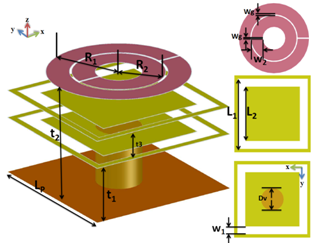
|
|
Fig. 1 The unit cell of THz MMA [1]. |
It is well known that the electromagnetic property of a uni-axial anisotropic medium can be described as an diagonal tensor. The relative permittivity (permeability) tensor for the uniaxial medium can be expressed as,
The SRR and VIA shown in Fig. 1 determine the optical axis directions of permittivity εa and permeability μc, respectively. Through derivation of
Fresnel’s coefficient on the interface where the optical-axis is parallel to the normal vector of interface between isotropic medium and uniaxial medium, the reflectionless condition can be obtain as μd = εb, εa = εb-1, and εa=μc [1], [2].
|
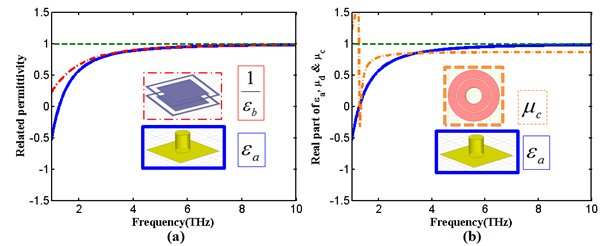
|
|
Fig. 2 (a) The real part of εa, and εb-1. (b) The real part of εa, μc and μd. The green dashed line indicates the permeability μd in vacuum. |
Each component involving VIA-rod, SRR, and slot-FSS of MMA can be tailored to make macroscopic dispersion of each part satisfying the required UPML relation. The values of effective εa, εb-1, and μc are closed to each other after 3 THz. Due to the lack of magnetic materials in high frequency regime, the value of μd for our proposed absorber is close to one without dispersion as shown in Fig. 2.
3. Full-wave Simulation
|

|
|
Fig. 3 Reflectance spectra of the proposed structure as function of incident angle for (a) TE polarization and (b) TM polarization. The white dash curves and black dash-dot curves indicate the gradient contours for 10% and 50% reflectance, respectively. |
The MMA shown in Fig. 1 is simulated and optimized using the commercial full-wave simulation software (Ansys HFSS). The simulated reflectance spectra (Fig. 2(a) and Fig. 2(b)) show a outstand performance. The reflectance of the MM absorber is below 10% in a wide incident angles ranging from 0o to 60o for both TE and TM polarizations within the frequency regime of 0.9 to 10.5 THz, corresponding to 168% bandwidth to the central wavelength.
4. Summary
We demonstrated a wideband and wide-angle terahertz absorber based on the concept of UPML. The SRR, a bi-layered slot-FSS, and VIA structures were optimized to achieve equivalent electric and magnetic plasma frequencies and similar dispersion profiles to approach the effective permittivity and permeability tensor of an ideal UPML. The reflectance can achieve excellently below 10% from 0.9THz to 10.5THz, corresponding to 168% of the central frequency under 0o to 60o incidence, for both TE and TM waves.
Reference:
[1] S.-K. Tseng, H.-H. Hsiao, and Y.-P. Chiou, “Wide-angle wideband polarization-insensitive perfect absorber based on uniaxial anisotropic metasurfaces,” OSA
Opt. Mater. Express,
10(5),
1193-1203 (2020).
[2] A. Taflove and S. C. Hagness, “ Computational Electrodynamics: The FDTD method, 5th ed”, Chap. 7 (Artech House, 2007)
FDTD simulation analysis of the nano structures color appearances of biological creatures
Professor Snow H. Tseng’s Laboratory
Graduate
Institute of Photonics and
Optoelectronics, National Taiwan
University
Abstract:
Here we report a simulation approach to analyze the effect of nano structure and regularity on biological color appearances. The finite-difference time-domain (FDTD) simulation technique is employed to analyze the optical characteristics of various biological species: Morpho menelaus, Euprymna scolopes, Dynastes hercules, Hoplia coerulea, and Paracheirodon innesi. Various parameters of their optical structures are analyzed, including: size, spacing and regularity of the structure and the refractive indices of the structure’s component materials. Simulation findings demonstrate that the proposed simulation is robust, yields prediction color matching the actual color appearances observed in nature. More importantly, the reported simulation provides a means to analyze and envision the color appearance for engineered structures.
|
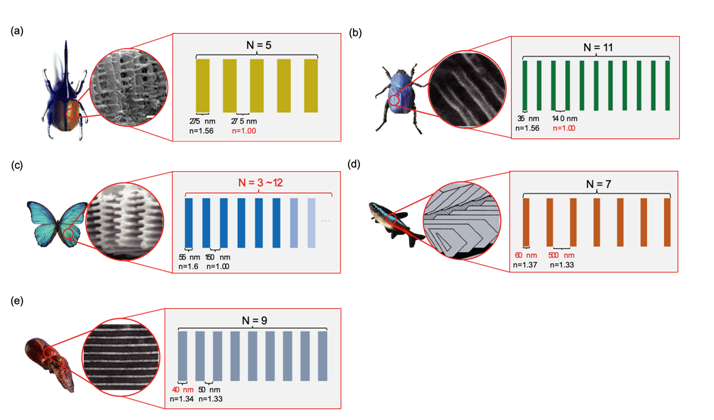
|
|
Figure. Schematics of the simulation model of various species [1-5]. The simulation variable for each model: (a) Hercules beetle: the refractive index of the gap between layered nano structures. (b) Cerulean chafer beetle: the refractive index of the gap between layered nano structures. (c) Morpho butterfly: the number of stacked nano layers. (d) Neon tetra: the width of spacing and structure thickness. (e) Hawaiian bobtail squid: thickness of the nano structure layers. |
Reference:
[1] S. Yoshioka, B. Matsuhana, S. Tanaka, Y. Inouye, N. Oshima, and S. Kinoshita, "Mechanism of variable structural colour
in the neon tetra: quantitative evaluation of
the Venetian blind model," J R Soc Interface
8,
56-66 (2011).
[2] S. R. Mouchet, M. Lobet, B. Kolaric, A. M. Kaczmarek, R. Van Deun, P. Vukusic, O. Deparis, and E. Van Hooijdonk, "Photonic scales of Hoplia coerulea beetle: any colour
you like," Materials Today: Proceedings
4 ,
4979-4986 (2017).
[3] S. Kinoshita, S. Yoshioka, Y. Fujii, and N. Okamoto, "Photophysics of Structural Color in the Morpho
Butterflies," FORMA
17 ,
103-121 (2002).
[4] H. E. Hinton, and G. M. Jarman, "Physiological colour change in the elytra of the hercules beetle, Dynastes hercules,"
Journal of Insect Physiology
19 ,
533-549 (1973).
[5] A. R. Tao, D. G. DeMartini, M. Izumi, A. M.
Sweeney, A. L. Holt, and D. E. Morse, "The role
of protein assembly in dynamically tunable
bio-optical tissues," Biomaterials
31 ,
793-801 (2010).
Ultrawide-Angle and High-Efficiency Metalens in Hexagonal Arrangement
Professor Guo-Dung Su
Graduate Institute of Photonics and
Optoelectronics, National Taiwan University
Wide-angle optical systems play a vital role in imaging applications and have been researched for many years. In traditional lenses, attaining a wide field of view (FOV) by using a single optical component is difficult because these lenses have crucial aberrations. In this study, we developed a wide-angle metalens with a numerical aperture of 0.25 that provided a diffraction-limited FOV of over 170° for a wavelength of 532 nm without the need for image stitching or multiple lenses. The designed wide-angle metalens is free of aberration and polarization, and its full width of half maximum is close to the diffraction limit at all angles. Moreover, the metalens which is designed through a hexagonal arrangement exhibits higher focusing efficiency at all angles than most-seen square arrangement. The focusing efficiencies are as high as 82% at a normal incident and 45% at an incident of 85°. Compared with traditional optical components, the proposed metalens exhibits higher FOV and provides a more satisfactory image quality because of aberration correction. Because of the advantages of the proposed metalens, which are difficult to achieve for a traditional single lens, it has the potential to be applied in camera systems and virtual and augmented reality.
|
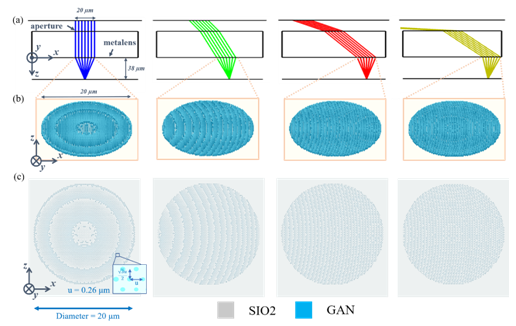
|
|
Schematic of the metalens and its top view at incident angles of 0°, 30°, 60°, and 85° (a) Layout at different incident angles; (b) schematic of the wide-angle metalens with hexagonal arrangement at different angles; and (d) top view of the metalens at different angles. |
Organic light-emitting diode with fluorophore sensitized triplet-triplet annihilation
Professor Jiun-Haw Lee
Graduate
Institute of Photonics and
Optoelectronics, National Taiwan
University
An organic light-emitting diode (OLED) based on triplet-triplet annihilation upconversion (TTAUC) was demonstrated consisting of tri-layer structure: tris-(8-hydroxyquinoline)aluminum (Alq3),1-(2,5-dimethyl-4-(1-pyrenyl)phenyl)pyrene (DMPPP), and 9,10-bis(2’-naphthyl) anthracene (ADN) which acted as sensitizer, triplet-diffusion-singlet-blocking (TDSB) layer, and emitter, respectively. Carriers recombined at the sensitizer which formed 25% singlets and 75% triplets. Triplets transferred the energy to emitter through TDSB for TTAUC emission, while TDSB blocked ADN singlet quenching by sensitizer. Intrinsic efficiency of TTAUC, defined as output triplet exciton number from TTAUC process over input triplet exciton, reached 86.1% in this OLED.
|
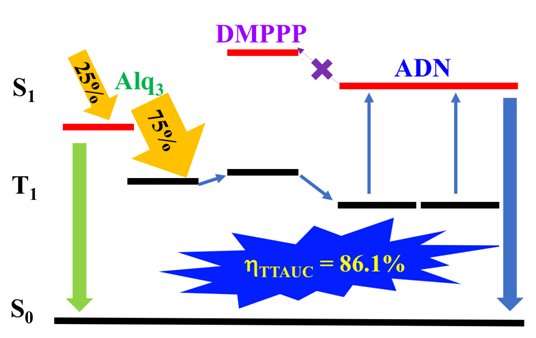 |
|
Fig. 1. Schematic diagram of energy transfer routes in the TTAUC-OLED. |
|
|
|
 |
|
 |
|
| |
|
|
 |
|
 |
|
|
|